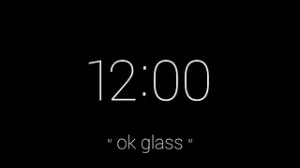Community. This is the word Neal Stimler, Associate Digital Asset Specialist at the Met in NY, connects to Museums and the Web. The creation of an extended community of practices, that comes together to learn and interact, is in fact one of the biggest assets of such an important international conference.
From 18th to 2th1 February 2014, museums and heritage professionals, as well as people interested in communication, technologies and contemporary languages, will have the chance to be part of this community during Museums and the Web Florence.
Neal Stimler is a Google Glass Explorer and participates in experimental programs with The Met Media Lab. At MWF2014 he will chair a session on How to Google-Glass. By taking an interdisciplinary approach that merges art history, cultural studies, digital technology and sociology, Neal advocates for digital humanities methods of collaboration and inquiry as the core of museum practice.
We picked his brain with a few questions to better understand his work. You can join the session on Google Glass on Thursday, February 20th at MWF. Take a look at the whole program here.
Despite the example of the Egyptian Museum in Turin, with the project Google Glass 4 lis, Google Glass and its potential might still be considered as “science fiction” by Italian museums (and probably not only by them). Do you think that, besides the obvious limitations, is there some kind of “mind set” that causes resistance from museums in embracing the newest technologies? If you could give one piece of advice to Italian museums in this sense, what would it be?
Google Glass and other wearable technologies are part of the immediate present – the now. Wearable technology is a fact of our world. Museums and cultural institutions can engage wearables in an effort to understand applications for their staff and public. Curiosity about the world is vital to the process of humanistic scholarship in museums. This openness applies to innovations in technology as well as new methods and means of intellectual inquiry.
On the other hand, start using a “shiny new technology” to adapt to the rapid changes of technical innovations can be also problematic for a museum in terms of sustainability. How do you think this might apply to Google Glass?
Museums seeking sustained relationships with their constituents need to devote resources and time to engaging the public via mobile devices like smartphones, tablets and wearables like Google Glass. As the organizers of the Museums and the Web Florence already identified with the conference themes, society is in a new cultural paradigm – one defined by the hybridity of our physical and digital lives. The public’s engagement with museums on social media and open access to digital content via personal mobile devices are keys to sustainability.
What is the session of MWF that you are most curious about?
I am excited for the keynote addresses by Rob Stein, “Connecting the Dots: How Digital Methods Become the Glue that Binds Cultural Heritage to Contemporary Society,” and Cory Doctorow, “GLAM and the Free World.” In addition to visiting Florence’s venerable art museums, a visit to the Museo Galileo is an important part of my experience of the conference as this combines my interests at the intersections of art and technology.
For more about Neal Stimler’s work with Google Glass at The Metropolitan Museum of Art, take a look at the Digital Underground blog.
Other interesting readings:
“Seeing The Met Through Glass”
“Making New Art Inspired by the Met’s Collections with Google Glass“


Join the session on Google Glass on Thursday, February 20th at #MWF2014 and discover with Valerio Saffirio the project Google Glass 4 lis developed for the Egyptian Museum in Turin. See you soon in Florence 🙂